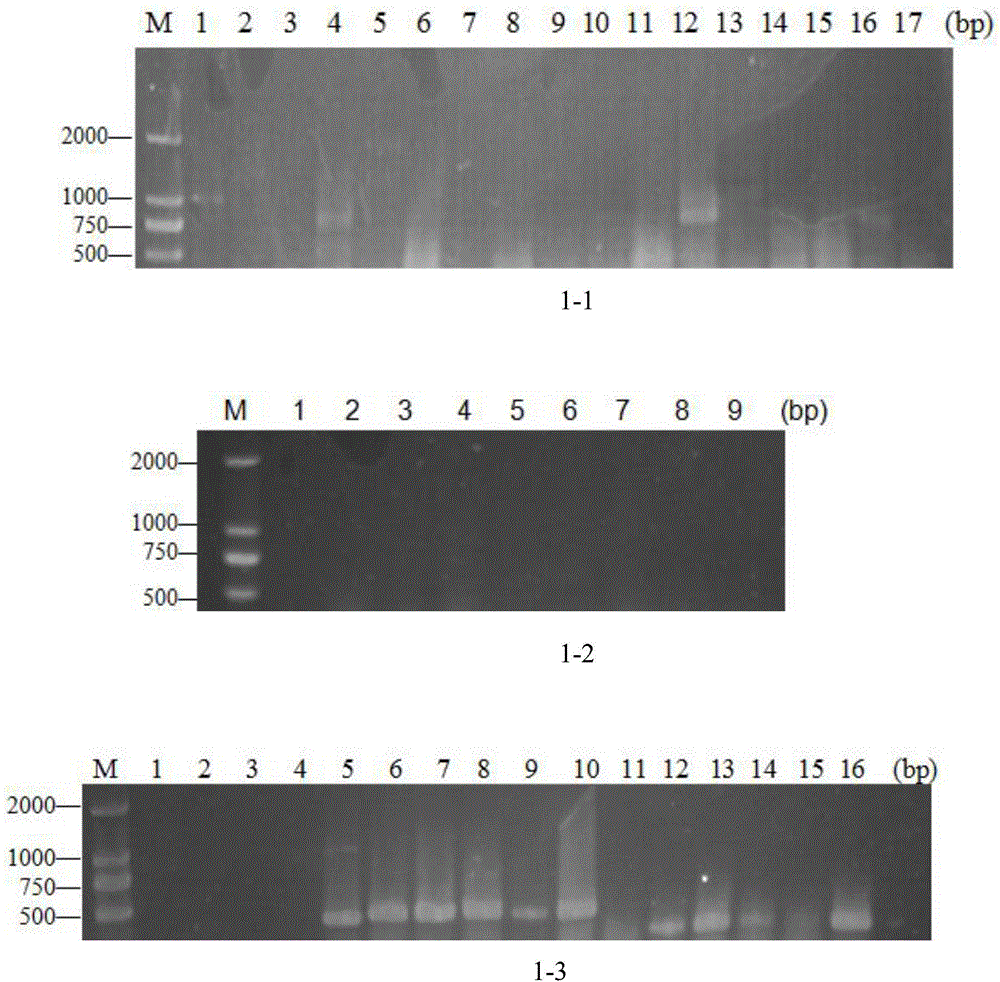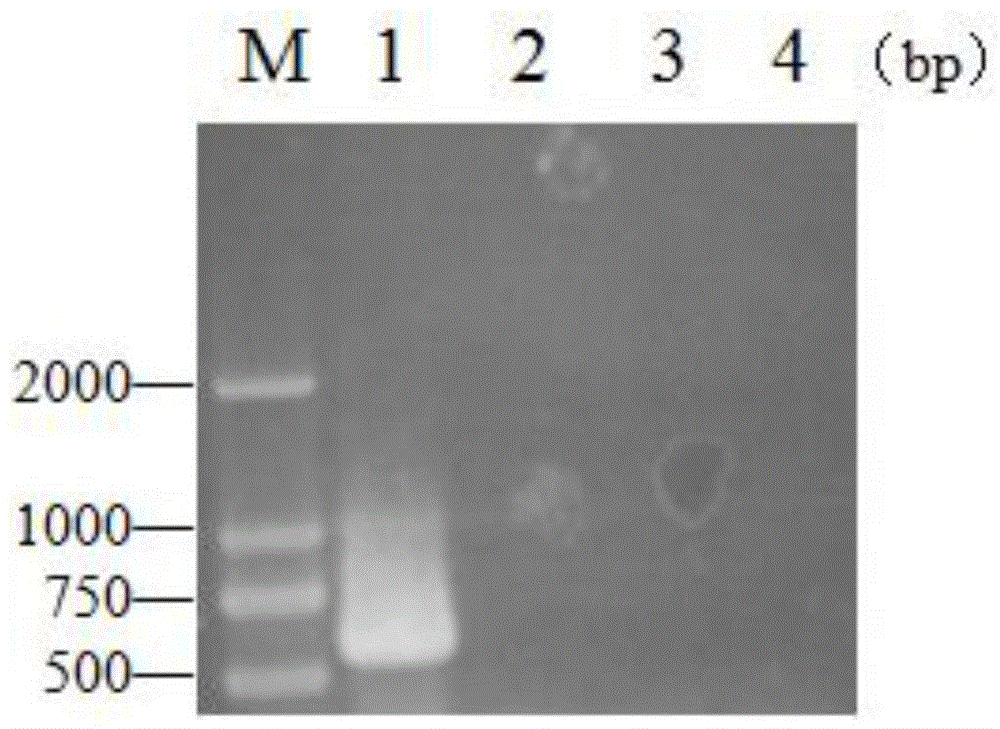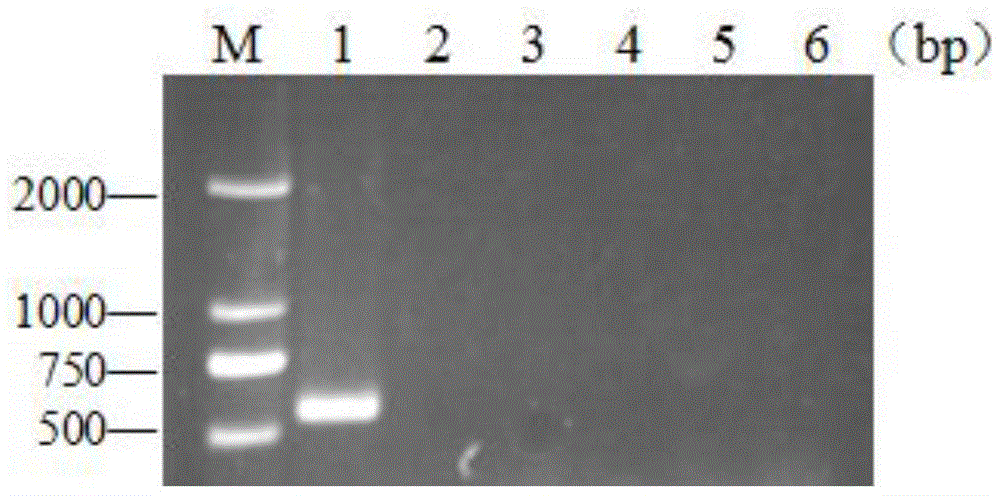Molecular marker for rapidly detecting listeria monocytogenes
A technology of Listeria monocytogenes and molecular markers, applied in the direction of microorganism-based methods, microorganism measurement/inspection, biochemical equipment and methods, etc., can solve problems such as complicated operation, inability to adapt to rapid detection, and long time consumption
- Summary
- Abstract
- Description
- Claims
- Application Information
AI Technical Summary
Problems solved by technology
Method used
Image
Examples
Embodiment 1
[0043] Embodiment 1, utilize PCR method to detect Listeria monocytogenes,
[0044]The primers were RliA(F) and RliA(R), RliB(F) and RliB(R), RliC(F) and RliC(R), RliE(F) and RliE(R), RliF(F) and RliF( R), ssrA(F) and ssrA(R), LhrA(F) and LhrA(R) seven pairs.
[0045] The sequences of the remaining 6 pairs of primers are:
[0046] RliA(F):gCgATTCCAgTCATTTTTATAAAg
[0047] RliA(R):gATgAAATgTCCgATTCTTgTCATg
[0048] RliC(F):gCATAATgCTTAAgTggggTAAg
[0049] RliC(R):gCgACAACCAATTTACTTgATTAC
[0050] RliE(F):gCAACAAAAACACCTATTTTCATTAgTgg
[0051] RliE(R):gCAAATAATCTTTACgAAACggAAAC
[0052] RliF(F):CgATAAACAAATTCTCCTTAAATAAAAAC
[0053] RliF(R):CAggAACAACCgATAgTAgCggg
[0054] ssrA(F):gCTTTCAAAgAAAACAgCgATTATCCg
[0055] ssrA(R):gCACTTAACAggCAAAgAAATTTTg
[0056] LhrA(F):gCTTATTAAATTATTCCgCCTATAAAg
[0057] LhrA(R): ATTTTTACTAATgTgATTTTCATgggg.
[0058] Templates: L.monocytogenes, L.innocua, L.welshimeri, L.seeligeri, Listeria grayi (L. grayi), Listeria ivanovii (L. ivan...
Embodiment 2
[0067] Example 2, verify the feasibility of bacterial liquid instead of extracting DNA for verification
[0068] Using RliB(F) and RliB(R) of the present invention as primers; ), Listeria welshi (L.welshimeri), Listeria sierra (L.seeligeri), Listeria grayi (L.grayi) bacterial solution (concentration of 50ng / μL) was directly added as a template In the PCR system (PCR reaction system and PCR reaction procedure are the same as in Example 1), PCR is performed, and 10 μL is taken for agarose gel electrophoresis.
[0069] The result is as image 3 shown; according to image 3 , we learned that: the present invention can directly use the bacterial solution instead of extracting the genome to carry out PCR verification.
Embodiment 3
[0070] Embodiment 3, template is changed into: monocytogenes Listeria (L.monocytogenes), Escherichia coli, Bacillus subtilis and the bacterium liquid of Agrobacterium (concentration is 50ng / μL), with RliB of the present invention (F ) and RliB (R) as primers; the rest are the same as in Example 1.
[0071] The result is as figure 2 mentioned.
[0072] according to figure 2 , we learned that the molecular marker designed in the present invention has certain specificity, and the band can only be obtained under the premise of using Listeria monocytogenes as a template.
PUM
 Login to View More
Login to View More Abstract
Description
Claims
Application Information
 Login to View More
Login to View More - R&D
- Intellectual Property
- Life Sciences
- Materials
- Tech Scout
- Unparalleled Data Quality
- Higher Quality Content
- 60% Fewer Hallucinations
Browse by: Latest US Patents, China's latest patents, Technical Efficacy Thesaurus, Application Domain, Technology Topic, Popular Technical Reports.
© 2025 PatSnap. All rights reserved.Legal|Privacy policy|Modern Slavery Act Transparency Statement|Sitemap|About US| Contact US: help@patsnap.com



